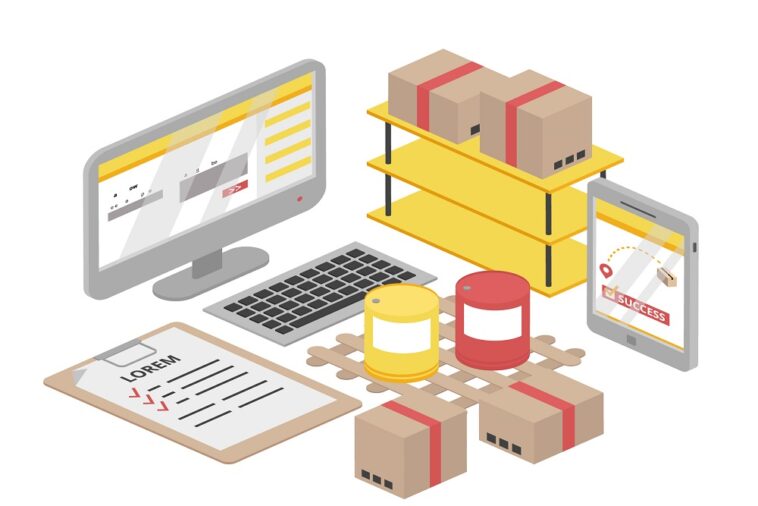Inventory control is a crucial part of running a successful business. It helps companies manage stock efficiently, ensuring they have enough products to meet customer demand without overstocking or understocking. Poor inventory control can lead to lost sales, increased costs, and operational inefficiencies.
Many businesses struggle with managing their inventory due to inaccurate stock records, supplier delays, changing customer demand, and other challenges. This blog will explain the common inventory control challenges businesses face and how to solve them using smart strategies and advanced tools like thouSense.
What is Inventory Control?
Inventory control is the process of managing a company’s stock to ensure the right products are available at the right time. Proper inventory control prevents stock shortages, reduces excess inventory, and helps businesses operate smoothly. It ensures that a company always has enough stock to meet customer demand while avoiding unnecessary storage costs.
Common Challenges in Inventory Control and Their Solutions
1. Inaccurate Inventory Records
One of the biggest problems businesses face is incorrect inventory data. Mistakes in stock records can lead to shortages, delays, and lost sales. If a company believes it has more stock than it actually does, it may not reorder on time, resulting in stockouts. Similarly, thinking that stock is lower than it is may lead to unnecessary over-ordering.
The best way to solve this issue is by using automated inventory tracking systems that update stock levels in real-time. Implementing barcode scanning and AI-based inventory software can help reduce human errors and improve accuracy. Businesses should also conduct regular stock audits to verify that recorded and actual inventory levels match. These practices ensure that inventory data remains up-to-date and reliable.
2. Changing Customer Demand
Customer demand can change suddenly due to seasonal trends, market conditions, or unexpected events. If demand is higher than expected, businesses may run out of stock. If it is lower, they may be left with excess inventory that takes up space and money.
To handle unpredictable demand, businesses should use AI-powered demand forecasting tools like thouSense to predict customer trends. These tools analyze past sales data and market conditions to help businesses make smarter stocking decisions. It is also beneficial to maintain safety stock for high-demand products to prevent stockouts. Additionally, adjusting inventory orders regularly based on updated sales forecasts ensures that businesses do not overstock or understock their products.
3. The Bullwhip Effect
The bullwhip effect happens when small changes in customer demand cause large fluctuations in inventory levels throughout the supply chain. Poor communication, delayed orders, or incorrect forecasting can make this problem worse.
Improving communication between suppliers, manufacturers, and retailers can help reduce the bullwhip effect. Businesses should use real-time inventory tracking systems to share accurate demand data across the supply chain. Implementing just-in-time (JIT) inventory management can also help by reducing excess stock and ensuring that inventory is replenished only when needed. These steps improve supply chain efficiency and prevent unnecessary stock fluctuations.
4. Supplier Delays and Unreliable Suppliers
To solve this issue, businesses should work with multiple suppliers to reduce dependency on a single source. Maintaining strong relationships with reliable suppliers ensures timely deliveries and reduces supply chain risks. Implementing automated reordering systems can also help businesses order new stock before it runs out, ensuring they always have enough inventory to meet demand.
5. Overstocking and Understocking
Businesses can use inventory optimization techniques to maintain balanced stock levels. AI-based inventory forecasting tools like thouSense help businesses predict demand accurately and adjust their inventory accordingly. Monitoring sales data and market trends also helps businesses make informed decisions about stock levels, reducing the chances of overstocking or understocking.
6. Poor Inventory Visibility
Cloud-based inventory management systems provide real-time stock updates, allowing businesses to monitor inventory across multiple warehouses or stores. Implementing RFID tracking further improves inventory visibility by providing accurate stock data at all times. These solutions help businesses manage inventory efficiently and reduce the risk of running out of stock.
7. Human Errors in Inventory Management
Businesses should train employees on proper inventory management practices to minimize mistakes. Automating inventory tracking using AI-based systems reduces reliance on manual processes and improves accuracy. Conducting regular stock checks also ensures that inventory records remain error-free and up-to-date.
8. High Storage and Holding Costs
Implementing just-in-time (JIT) inventory management helps businesses order stock only when needed, reducing storage costs while ensuring enough supply to meet demand. Demand forecasting tools like thouSense also prevent over-ordering by predicting sales trends accurately. Additionally, optimizing warehouse space by organizing stock efficiently helps businesses reduce storage costs and improve inventory control.
9. Slow and Inefficient Order Processing
Integrating inventory control systems with sales and order processing platforms streamlines operations and prevents delays. Automating stock replenishment using AI-based inventory management tools helps businesses restock efficiently and maintain optimal inventory levels. Improving warehouse organization further speeds up order fulfillment, ensuring customers receive their orders on time.
10. Outdated Inventory Management Systems
Businesses should upgrade to modern inventory management software with real-time tracking, AI-based demand forecasting, and cloud storage for easy access. AI-powered tools like thouSense improve demand forecasting and inventory control, helping businesses reduce errors and make better inventory decisions.
How thouSense Helps Businesses Improve Inventory Control
With thouSense, businesses can reduce stockouts and excess inventory by predicting demand accurately. The tool improves order management by automating inventory tracking, saving storage costs by avoiding unnecessary overstocking, and increasing profits by ensuring products are always available when customers need them. By using thouSense, businesses can manage inventory more efficiently, reduce costs, and improve customer satisfaction.
Conclusion
Effective inventory control is essential for businesses to run smoothly and stay profitable. Common challenges like inaccurate stock data, supplier delays, and unpredictable demand can cause serious problems. However, businesses can overcome these challenges by using smart strategies, automation, and AI-powered tools like thouSense.
By implementing real-time inventory tracking, demand forecasting, and automated inventory management, businesses can maintain the right stock levels, reduce waste, and improve overall efficiency.
This post was created with our nice and easy submission form. Create your post!





